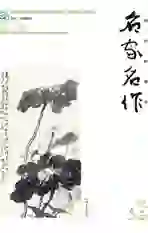三美论视角下的唐诗英译对比研究
2024-08-09阳绪赟胡东平
[摘 要] 唐诗作为中国古典文学的瑰宝,以独特的魅力,承载了中华民族千年的历史与情感。每一首诗都仿佛是一幅流动的画、一曲动人的歌,传递着古人的智慧与情感。在唐诗英译的过程中,如何确保译本能够准确地传达原作的精髓,是一个极其重要的课题。许渊冲先生的“三美论”为人们提供了宝贵的指导。以李白的《月下独酌》、杜甫的《登高》、王维的《鸟鸣涧》、柳宗元的《江雪》为例,通过对比研究,可以让唐诗这一瑰宝在国际舞台上绽放其独特的光彩,让全世界都能感受到中华文化的博大精深和无穷魅力。
[关 键 词] 三美论;唐诗英译;译例分析;对比研究
基金项目:翻译和谐伦理体系构建研究(项目责任人:胡东平,湖南农业大学;项目批准号:19YJA740019)。
唐诗为中华文化的瑰宝,通过英译能促中西交融,助文化传承,提升世界精神,增进民族理解。本文基于许渊冲“三美论”探讨英译,虽受审美差异影响,仍能为唐诗英译研究提供宝贵视角,推动中华文化国际传播。
一、三美论理论简介
三美论是许渊冲先生独具匠心的诗歌翻译理论,深刻诠释了诗歌翻译的精髓。这一理论要求在翻译唐诗时,要力求实现“形美、音美、意美”的和谐统一,即在保持原诗形式美的基础上,追求音韵的和谐及意境的深远。通过借鉴译入语的优势,许渊冲先生努力确保唐诗在英译过程中不仅不损失其深厚的文化精髓,还能完美展现其独特的艺术魅力。这种翻译理念不仅是对唐诗的一种尊重,更是对中华文化的一种传承与弘扬。
二、唐诗佳作英译对比研究
(一)李白《月下独酌》(节选)英译分析
原文:
花间一壶酒,独酌无相亲。
举杯邀明月,对影成三人。
1.第一联:花间一壶酒,独酌无相亲。
Giles译:An arbor of flowers and a kettle of wine:
Alas! In the bowers no companion is mine.
Ezra Pound译:Amongst the flowers is a pot of wine,
I pour alone but with no friend at hand.
林语堂译:A pot of wine amidst the flowers,
Alone I drink sans company.
分析:Giles译押韵但意不足;Pound译意美音欠。笔者更偏向于许渊冲先生的译文:“Among the flowers, from a pot of wine. I drink without a companion of mine.” 音韵美,意境近。
2.第二联:举杯邀明月,对影成三人。
Giles译:Then the moon sheds her rays on my goblet and me,
And my shadow betrays we’re a party of three!
Ezra Pound译:So I lift the cup to invite the shining moon,
Along with my shadow we become party of three.
林语堂译:The moon I invite as drinking friend,
And with my shadow we are three.
分析李白“邀”字显情趣,Giles译偏离原意。林译简洁,但对仗欠。此联笔者更偏向于Arthur Waley的译本:“Raising my cup I beckon the bright moon. For he, with my shadow, will make three men.” 此译意准、情真、音谐。
(二)杜甫《登高》英译分析
原文:
风急天高猿啸哀,渚清沙白鸟飞回。
无边落木萧萧下,不尽长江滚滚来。
万里悲秋常作客,百年多病独登台。
艰难苦恨繁霜鬓, 潦倒新停浊酒杯。
1.首联:风急天高猿啸哀,渚清沙白鸟飞回。
Witter Bynner译:In a sharp gale from the wide sky apes are whimpering.
Birds are flying homeward over the clear lake and white sand.
吴钧陶译:From heaven high the winds are whirling down with monkey’s whine,
And over the white sanded hursts the birds are cleaving fine.
许渊冲译:The wind so swift,the sky so wide,apes wail and cry;
Water so clear and beach so white, birds wheel and fly.
分析:首联登高,Bynner译缺音律美;吴、许译押尾韵,许译节奏佳。许译对仗工整,形式似原诗;Bynner失对仗,吴译略欠工。许译“wheel”更贴原意,展现原诗精髓。
2.颔联:无边落木萧萧下,不尽长江滚滚来。
Bynner译:Leaves are dropping down like the spray of a waterfall,
While I watched the long river always rolling on.
吴钧陶译:The boundless forests shed their yellow leaves with rustles;
The everflowing Yangtze on its way rolls and wrestles.
许渊冲译:The boundless forest sheds its leaves shower by shower;
The endless river rolls its waves hour after hour.
分析:颔联悲凉,时空感强,拟声词烘托萧瑟。Bynner译生动但音美不足;吴译时空感好,但对仗拟声不足;许译对仗工整,拟声押韵,音美、意美、形美俱佳。
3.颈联:万里悲秋常作客,百年多病独登台。
Bynner译:I have come three miles away. Sad now with autumn;
And with my hundred years of woe, I climb this height alone.
吴钧陶译:Autumn is chilling me - always a thousandmiles-roamer,
Alone mounting the mountain, and a life-long sufferer.
许渊冲译:A thousand miles from home, I’m grieved at autumn’s plight;
I’ll now and then for years, alone I’m on this height.
分析:颈联描绘悲苦,Bynner译失实,吴、许虽捕情感,略失深意。许译“grieved at autumn”显伤感,但略有不足。此联笔者更偏向于杨宪益先生的译本:“All around is autumnal gloom and I, long from home. A prey all my life to ill heath, climb the terrace alone.” 准确传情达意。
4.尾联:艰难苦恨繁霜鬓,潦倒新停浊酒杯。
Bynner译:Ill fortune has laid a bitter frost on my temples,
Heart-ache and weariness are a thick dust in my wine.
吴钧陶译:I deeply loathe my rime-like temples as in these hard times;
Of late Senility yet forces me to give up wines!
许渊冲译:Living in times so hard, at frosted hair I pine;
Cast down by poverty, I have to give up wine.
分析:尾联述困苦,Bynner译“ill fortune”,吴、许译“hard times”,音律不足。弃酒因多病与贫穷,可以理解为:“困苦白头病更忧,因病贫穷酒难留。心头苦楚无处诉,悲歌一曲泪双流。”
(三)王维《鸟鸣涧》英译分析
原文:
人闲桂花落,夜静春山空。
月出惊山鸟,时鸣春涧中。
1.诗名:鸟鸣涧
杨宪益译:The Gully of Twittering Birds;
翁显良译:Stillness Audible;
王宝童译:The Warble Ravine;
2.第一联:人闲桂花落,夜静春山空。
杨宪益译:Idly I watch the cassia petals fall; Silent the night and empty the spring hills.
翁显良译:Free and at peace. Let the sweet osmanthus shed its bloom.
Night falls and the very mountains dissolve into the void.
王宝童译:In quiet hear how bay-flowers fall to the ground—The vernal hills at night are void around!
3.第二联:月出惊山鸟,时鸣春涧中
杨宪益译:The rising moon startles the mountain birds; Which twitter fitfully in the spring gully.
翁显良译:When the moon rises and the birds are roused, their desultory chirping only accents the deep hush of dales.
王宝童译:At times the birds are startled by the moon,
Whose climb is heard in the dale with a warbling tune?
分析:(1)对于诗题“鸟鸣涧”的翻译,杨宪益选择了直译法,将其译为“Twittering Birds Gully”,虽直接但略显平淡。而翁显良则巧妙地将其处理为“Stillness Audible”,通过“无声胜有声”的手法,将山谷的静谧与鸟鸣的清脆巧妙地结合在一起,更具意境美。
(2)在翻译“人闲桂花落,夜静春山空”时,杨宪益使用了“Idly I watch”来描绘诗人闲适的状态,但“Idly”一词并未完全传达出诗中的闲适感。而翁显良则巧妙地运用了“Free and at peace”,不仅传达了诗人的闲适状态,更深化了诗中的意境。王宝童则选择“hear”一词,与“静”的意境更为契合,使读者能够感受到春夜山间的静谧与安详。翁显良的“dissolve into the void”和王宝童的“void round”则更加形象地描绘了青山空寂的神秘感,同时也保持了音律的和谐。
(3)在翻译“月出惊山鸟,时鸣春涧中”时,杨宪益的译文虽直接但略显平淡,未能充分展现出“静”的意境。相比之下,翁显良的译文不仅押头韵且形式对仗,后半句更是深化了诗中的意境。王宝童则通过“climb”一词营造出以动写静的意境,使读者能够感受到月光下山鸟的惊飞和春涧中的鸟鸣,进一步强化了“静”的渲染。
(四)柳宗元《江雪》英译分析
原文:
千山鸟飞绝,万径人踪灭。
孤舟蓑笠翁,独钓寒江雪。
许渊冲译:
From hill to hill no bird in flight,
From path to path no man in sight.
A straw-cloak’d man afloat,behold!
Is fishing snow on river cold.
赵甄陶译:
O’er any hills no birds are seen;
In any paths no footprints show.
On a boat old man in cloak and hat.
Angles alone in stream and snow.
Bynner译:
A hundred mountains and no bird,
A thousand paths without a footprint,
A little boat, a bamboo cloak.
An old man fishing in the cold river-snow.
分析:三位译者唐诗英译各具特色:许译传神但后两句欠精准,赵译情感充沛但“孤”译平淡,Bynner译法笼统。赵、许译音韵美,赵译尾句感染力强,Bynner译音普通。形美上,许译对仗工整,赵译意境完美,Bynner译文缺乏变化。许、赵译优于Bynner,但需更精准传达情感。
三、结束语
本文以许渊冲先生的“三美论”为理论基础,深入剖析了几首经典唐诗的英译艺术。在翻译过程中,不仅要追求原作内容的忠实传达,更要力求在意美、音美、形美三个维度上实现和谐统一。意美是翻译的灵魂。在英译唐诗时,应深入挖掘原诗中的意境,通过精准的语言表达,将诗中的情感、哲理和文化内涵传递给外国读者。音美是翻译的魅力所在。在英译唐诗时,我们可以借鉴英语诗歌的押韵和抑扬格等音韵技巧,使译文读起来更加朗朗上口,富有节奏感。这样不仅能增强译文的艺术感染力,还能使外国读者更好地领略唐诗的音韵之美。形美是翻译的外观要求。
在英译唐诗时,应尽量保持原诗的形式特点,如诗体、对仗等。通过诗体译诗,可以使译文在形式上与原诗保持一致,便于外国读者理解和接受。同时,通过对仗等修辞手法的运用,可以使译文在形式上更加美观、整齐。通过追求意美、音美、形美的和谐统一,我们可以使唐诗英译精准传达文化内涵和艺术魅力,实现“三美与共”的翻译目标。这不仅有助于推动中华文化走向世界,还能让外国读者更好地领略唐诗的独特魅力。
参考文献:
[1]唐诗三百首[M].许渊冲,译.北京:中国对外翻译出版公司,2008.
[2]叶珍珍,唐丽君.唐诗英译的研究综述[J].海外英语,2022(9):67-68,73.
[3]江铭钰.浅析许渊冲“三美论”在诗歌翻译中的应用[J].文学教育(上),2020(9):138-139.
[4]顾延龄.唐诗英译的“三美”标准:兼评《汉英对照唐诗一百五十首》[J].中国翻译,1987(6):23-26.
[5]陈福康 .中国译学理论史稿 [M]. 上海 :上海外语教育出版社 ,2000.
[6]祝一舒. 许渊冲翻译思想研究[D].南京:南京大学,.
[7]姚懿,廖海.许渊冲“三美论”视角下英译唐诗《登高》探析[J].英语广场,2023(20):12-15.
[8]王丹,唐丽君.基于三美论的唐诗英译对比研究:以杜甫的《绝句》其三为例[J].名作欣赏,2023(8):119-121.
[9]祝一舒.翻译艺术与求美之道:兼析许渊冲文学翻译“三美”论[J].外语与外语教学,2023(1):96-104,147.
[10]张广法,文军.柳宗元“江雪”英译策略体系描写研究[J].外国语言文学,2019,36(6):610-620.
作者单位:湖南农业大学人文与外语学院
